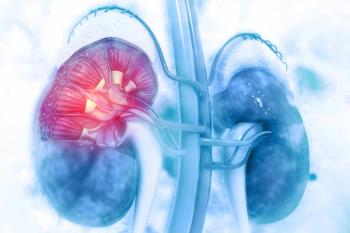
Tailoring Therapy Ups Cure Rates for Children With Rare Kidney Cancer
According to the AREN0532 and AREN0533 trials, adding additional drugs to a therapy regimen for Wilms tumor in children with high-risk disease improved outcomes.
Adding additional drugs to a therapy regimen for Wilms tumor-a rare form of kidney cancer-in children with high-risk forms of the disease improved outcomes. The therapies for high-risk patients, who have a specific chromosomal aberration linked to poorer outcomes, were studied in two phase III Children’s Oncology Group clinical trials, AREN0532 and AREN0533.
At a median follow-up of 3.6 years, the 4-year relapse-free survival rate was 83.9% for patients with stage I or II disease and 91.5% for patients with stage III or IV disease. Outcomes with the standard therapy were 75% for early-stage disease and 66% for late-stage disease.
These data were
“It’s very encouraging that we’re making progress for kids with a rare, high-risk form of this disease. The ability to easily identify a small subset of patients with a poorer prognosis means these children can receive treatment that’s right for them, while decreasing side effects for lower-risk patients,” said ASCO President-Elect Julie M. Vose, MD, at the presscast.
Wilms tumors predominantly affect children under the age of 5 years. These tumors make up about 75% of all pediatric kidney cancers. About 500 such cases are diagnosed in the United States every year. About 5% to 6% of Wilms tumors harbor a loss of heterozygosity (LOH) on chromosomes 1p and 16q that has been previously linked to a higher risk for relapse.
These results “clearly show evidence that augmentation of therapy can overcome a known adverse biomarker,” said Dix.
Thirty-five children with stage I/II disease and 52 with stage III/IV disease harboring the LOH on 1p and 16q were identified and treated with vincristine and dactinomycin plus the addition of doxorubicin. Patients with late-stage disease received a regimen of vincristine, dactinomycin, doxorubicin, and radiation therapy to which 4 cycles of cyclophosphamide plus etoposide were added.
This study is an example of how adding additional therapies to a pediatric cancer regimen can improve outcomes for a high-risk group of patients.
According to Dix, the toxicities that patients experienced were expected and manageable. Among patients with stage I/II disease, the addition of doxorubicin did not significantly increase short-term side effects. Among the stage III/IV patients, the most common severe side effect was suppression of bone marrow function, which occurred in 60% of patients. According to the study authors, this regimen reduces the proportion of patients who would require subsequent intensive therapy upon relapse, although the regimen does carry a risk of reduced fertility.
Newsletter
Stay up to date on recent advances in the multidisciplinary approach to cancer.
















































































